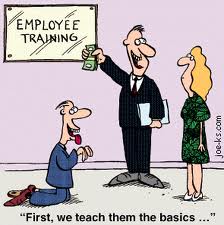 Environmental, Health and Safety (EHS) compliance typically includes the regulatory requirements from OSHA, EPA and DOT but also includes state and local requirements unique to those jurisdictions. In many instances each agency requires training specific to its regulations. It can be a difficult and daunting task to keep up with the training required by each of the agencies, considering the number of EHS regulations. Many companies adopt a web-based Learning Management System (LMS) while others do not have the capital to do so. Whether managing training electronically or manually, identifying the required trainings and the population to which the training should be administered is the key component to success of the program. I recently created a training matrix for a client; in it I identified over 20 unique EHS trainings required for the employees and contractors at the facility. I began with the required trainings for each of the aforementioned regulatory agencies and detailed them in the matrix. The matrix not only included the name of the training and the regulatory citation, but also the required contents of the training, the administration frequency and the site documentation that referenced the requirements. This type of matrix is a great foundation for a training program and ensures continuity in the event of personnel turnover. It provides a central location in which all training requirements are detailed. The matrix can be used a tool to engage executives and managers in EHS. When these stakeholders understand the requirements and risks associated with the activities in which their employees engage commitment and engagement–two key elements in creating a sustainable EHS program–are more easily obtained. While training is a foundational element of successful EHS programs it should not simply meet a regulatory requirement but result in employee competence. In a Help EHSCSI: How Do I Keep Employees Engaged in Environmental, Health & Safety? I detailed four tips to increase engagement and in the next article I will discuss designing training to increasing competency.
Environmental, Health and Safety (EHS) compliance typically includes the regulatory requirements from OSHA, EPA and DOT but also includes state and local requirements unique to those jurisdictions. In many instances each agency requires training specific to its regulations. It can be a difficult and daunting task to keep up with the training required by each of the agencies, considering the number of EHS regulations. Many companies adopt a web-based Learning Management System (LMS) while others do not have the capital to do so. Whether managing training electronically or manually, identifying the required trainings and the population to which the training should be administered is the key component to success of the program. I recently created a training matrix for a client; in it I identified over 20 unique EHS trainings required for the employees and contractors at the facility. I began with the required trainings for each of the aforementioned regulatory agencies and detailed them in the matrix. The matrix not only included the name of the training and the regulatory citation, but also the required contents of the training, the administration frequency and the site documentation that referenced the requirements. This type of matrix is a great foundation for a training program and ensures continuity in the event of personnel turnover. It provides a central location in which all training requirements are detailed. The matrix can be used a tool to engage executives and managers in EHS. When these stakeholders understand the requirements and risks associated with the activities in which their employees engage commitment and engagement–two key elements in creating a sustainable EHS program–are more easily obtained. While training is a foundational element of successful EHS programs it should not simply meet a regulatory requirement but result in employee competence. In a Help EHSCSI: How Do I Keep Employees Engaged in Environmental, Health & Safety? I detailed four tips to increase engagement and in the next article I will discuss designing training to increasing competency.
What methods do you utilize to track EHS or other regulatory required training? Join the discussion by commenting below.

1 thought on “Identify and Keep Track of Training”
Comments are closed.